‘Dr. Lowry, I read on the internet that I shouldn’t feed my child rice cereal. Is this true?’
Introduction by LaTonya Sanders
October is Children’s Health Month. In 1992, the American Academy of Pediatrics established October as Child Health Month in order to focus national attention on children’s health issues. This month and throughout the year, EPA works with parents, teachers, health providers and other partners to promote healthy environments where children live, learn and play.
Only through partnerships and collaboration can we make a difference and leverage the needed resources and support to guard all children against environmental health threats.
![]() EPA is proud to partner with people and organizations that are on the forefront in protecting children’s health and the environment, which is consistently true for Dr. Jennifer Lowry and the Mid-America Pediatric Environmental Health Specialty Unit. Dr. Lowry is a crucial partner to EPA, and her work is instrumental in creating a healthier future for our children.
EPA is proud to partner with people and organizations that are on the forefront in protecting children’s health and the environment, which is consistently true for Dr. Jennifer Lowry and the Mid-America Pediatric Environmental Health Specialty Unit. Dr. Lowry is a crucial partner to EPA, and her work is instrumental in creating a healthier future for our children.
By Jennifer Lowry, MD
 Pediatricians love children. We love helping children become the best people they can be. We love doing what is needed to make the world a better place for children to be healthy.
Pediatricians love children. We love helping children become the best people they can be. We love doing what is needed to make the world a better place for children to be healthy.
What pediatricians don’t love is being caught unaware of the latest blog, internet chat, or media storm regarding environmental health issues. Media and other news outlets often inform parents of possible environmental exposures that can cause harm to children.
Unfortunately, not all of the information is true, which causes undo concern for parents and confusion to pediatricians who are asked about these effects.
A World of Stuff
What is a pediatrician or family to do? It is important to realize we are surrounded by stuff. We, or the people who have come before us, have made choices that puts stuff in our world that is supposed to make things “better” or “easier.” Unfortunately, not all of the stuff we encounter fits both descriptions.
Cell phones, plastics, better beef, lead in paint, and synthetic athletic fields are just a few examples that may make life easier, but might not (or definitely not in some cases) make life better. But today, everywhere you turn, someone is saying our children’s lives are being damaged by the chemicals we have in the environment. Is this true?
A Matter of the Dose
As a toxicologist, I have been taught “Everything is a poison. It is just a matter of the dose.” Paracelsus was a Swiss-German Renaissance physician, botanist, alchemist, astrologer and general occultist. Born in 1493, he founded the discipline of toxicology. Paracelsus rejected the medical conditions of the time, and pioneered the use of chemicals and minerals in medicine. He is credited with the phrase “the dose makes the poison,” but is also known to have said: If given in small doses, “what makes a man ill also cures him.” Thus, he realized medicines can be beneficial at low doses, but cause harm at higher doses.
But what about chemicals and metals, both synthetic and natural? What about plants? Is it true there is no harm at low levels? Well, it depends. Medications used to treat illnesses are rigorously tested for safety and efficacy. Chemicals used in the environment are not. Alternative medications (dietary supplements) are not.
We know some medications have benefits at very low doses (micrograms), but can cause toxicity at the milligram dose (or 1,000 times the microgram dose). Some medications have no efficacy at the milligram dose and require much higher doses (grams or 1000 times the milligram dose) to have effect.
Why would we expect plants, supplements, chemicals or metals to be any different? Each chemical is different and has a different profile for efficacy and toxicity. Some chemicals (botulinum toxin, for example) are toxic at even lower doses. Unfortunately, we are finding out doses that were presumed safe were really not safe to begin with.
Arsenic and Lead
At one time, we erroneously thought because arsenic was “natural,” it could be placed in soil as a pesticide. However, arsenic is relatively immobile so anything that grows where it was placed (such as rice fields) can incorporate it into the food. Thus, higher levels of arsenic are found in foods grown where arsenic was used.
The same is true about lead. Pediatricians know that children are not little adults. But the level associated with toxicity in adults was applied to children early in the 1900s. However, it was soon realized children were more vulnerable and action was required at lower levels. Lead has not become more toxic over time. Our recognition of the toxicity of lead has changed for us to realize that even low levels of blood lead may result in harm.
So What Do We Do?
Can a 6-month-old child eat rice cereal? YES. Should they only eat rice cereal? NO. Does it have to be the first cereal they eat? NO. Can my teenager have a cell phone? YES. Should they be on it all the time? NO. Should they carry it in their pants or in their bra? NO. Should an infant or toddler play with a cell phone or tablet as their entertainment? NO.
How do you discover these answers? Great resources are available to help you sort this out:
- Pediatric Environmental Health Specialty Units (PEHSUs) – Staffed by health care professionals who are experts in pediatric environmental health, they can help to best inform health care providers and the public on how to keep children safe from environmental toxins.
- American Academy of Pediatrics – Through the Council on Environmental Health, health care professionals can learn about the latest science on pediatric environmental health and how to incorporate this knowledge into their practice. This website is a great resource for families to find out what experts in children advise.
- Poison Control Centers – Staffed by health care professionals, they are best able to help you with acute exposures. Some PEHSUs collaborate with poison control centers. Call 1-800-222-1222.
Lastly, be smart. Do you really need that stuff? Do you really need to throw it away? Reduce, reuse and recycle. It is easy to blame others before us for where we are now. But who will our children blame with what we leave them?
About the Introducer: LaTonya Sanders serves as the children’s health coordinator in EPA Region 7’s Office of Public Affairs in Lenexa, Kan. Her EPA career expands over 20 years in public affairs, communications, outreach, education and congressional relations.
About the Author: Jennifer Lowry, MD, is the medical director of the Mid-America Pediatric Environmental Health Specialty Unit at Children’s Mercy Hospital in Kansas City, among several other prestigious titles. She served on EPA’s Children’s Health Protection Advisory Committee from 2012 to 2014.


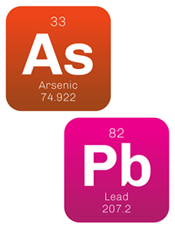
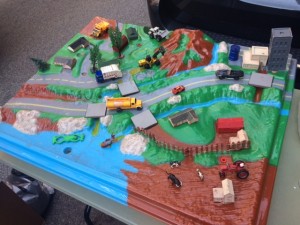
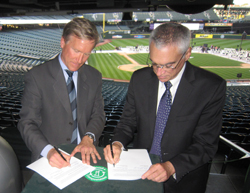
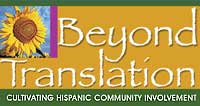
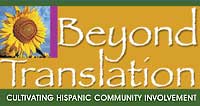 “…Independientmente de nuestro patrimonio cultural, todos tenemos el mismo interés en un medio ambiente limpio y saludable. Los hispanos con su profundo sentir de familia y comunidad pueden ayudar a EPA a difundir los valores de protección medioambiental a todos los segmentos de nuestra sociedad”. – Administrador de EPA Stephen L. Johnson
“…Independientmente de nuestro patrimonio cultural, todos tenemos el mismo interés en un medio ambiente limpio y saludable. Los hispanos con su profundo sentir de familia y comunidad pueden ayudar a EPA a difundir los valores de protección medioambiental a todos los segmentos de nuestra sociedad”. – Administrador de EPA Stephen L. Johnson